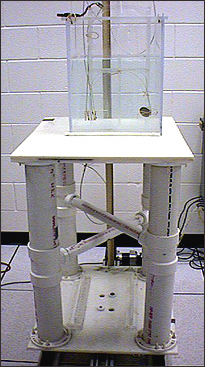Electromagnetic emissions from electronic article surveillance (EAS) systems, microwaves and other technologies have been shown to interfere with medical devices such as pacemakers. In an effort to determine if RFID can cause similar interference, the Georgia Tech Research Institute (GTRI), a nonprofit applied research arm of Atlanta’s Georgia Institute of Technology, is now testing RFID systems and their effects on a variety of medical devices. The tests are being conducted in GTRI’s Medical Device Test Center, founded in 1995 specifically to test the effects of electromagnetic radiation on medical devices.
GTRI has been testing the impact of electromagnetic emissions since the late 1960s, at the behest of the U.S. Army, which sought to better understand how military radar systems might interfere with the operation of civilian electronic systems. At that time, reports began surfacing that microwave ovens were cutting off the power of implanted pacemakers—electronic devices surgically implanted into patients’ hearts and chests to regulate heartbeats. Therefore, the Army teamed with the U.S. Air Force School of Aerospace Medicine, as well as GTRI and several pacemaker manufacturers, to investigate electromagnetic interference (EMI) involving the devices.

In so doing, GTRI developed a method for testing EMI in implantable pacemakers and other such devices, using a torso simulator—a rectangular tank filled with saline solution, which simulates the electrical characteristics of body tissues and fluids. The method has been incorporated into the pacemaker standard issued by the Association for the Advancement of Medical Instrumentation (AAMI), a worldwide developer of medical-device standards.
With RFID use becoming more prevalent, the Medical Device Test Center is incorporating the technology into its tests. “The first RFID systems that were installed and used were mainly in distribution, and were limited to warehouse environments, so RFID wasn’t something that the general public would be exposed to,” says Ralph Herkert, the center’s senior research engineer and manager. “But now RFID’s use is expanding. It’s going from tracking pallets down to items, and from the point of manufacture all the way to the point of sale.”
RFID is also becoming more widely utilized in the drug and health-care sector (see Report Sees Sharp Rise in Pharma RFID), and is increasingly being used to track medical devices and patients, as well as monitor implantable medical devices.
Electromagnetic emissions can interfere with implantable medical instruments. Such devices are typically designed to monitor heart rates, identify variations in the rates and generate electrical pulses when necessary. For example, a pacemaker would regulate a heart if its rate deviated from normal (when resting, the adult human heart typically beats between 60 and 100 beats per minute). Therefore, pacemakers have to be able to detect heart rates that are either too fast or too slow, says Jimmy Woody, a senior research engineer at the test center. “If something produces electrical signals that radiate within that passband,” he explains, “the medical device could mistakenly decide that the signal is a heart beat and do something that it shouldn’t do.”
According to Woody, the U.S. Food and Drug Administration requires medical-device manufacturers to show that their products will not respond inappropriately to electromagnetic transmissions. Electronics manufacturers have typically built filters into their systems to thwart EMI radiation. “But in medical devices,” Herkert notes, “that can be an issue, because you have to let some frequencies in, to monitor want you need to monitor.” Engineers at GTRI’s Medical Device Test Center are currently testing a passive RFID system that operates at the 13.56 MHz frequency. Preliminary tests of implantable medical devices in RFID environments have shown responses similar to those seen in EAS environments, necessitating further testing.
The center is talking with RFID manufacturers to bring in other types of RFID systems—passive and active, operating at different frequencies—to assess how each affects a variety of medical devices. These include pacemakers, both implantable and external; defibrillators, which administer an electric shock to a malfunctioning heart to reestablish a normal heart rhythm; and neurostimulators, devices that deliver electronic pulses to treat chronic pain, epilepsy and other health issues. It is important to test all variants, standards-based and proprietary, because each may have a different effect.
Medical-device manufacturers frequently test products at the Medical Device Test Center, because with any newly developed or enhanced device, the potential for EMI exists. In the case of the RFID tests, the manufacturers will use the proprietary results to work, in conjunction with RFID equipment makers, to reduce such interference.

